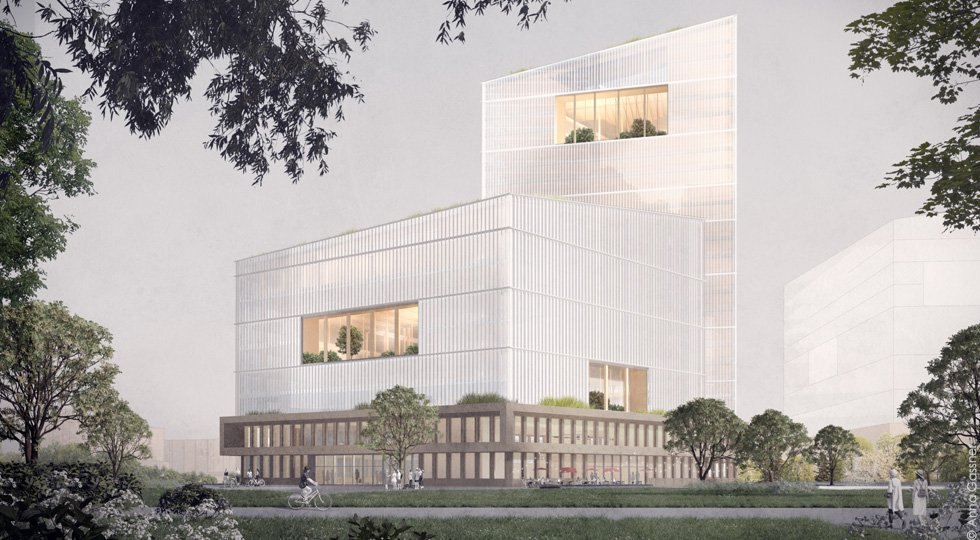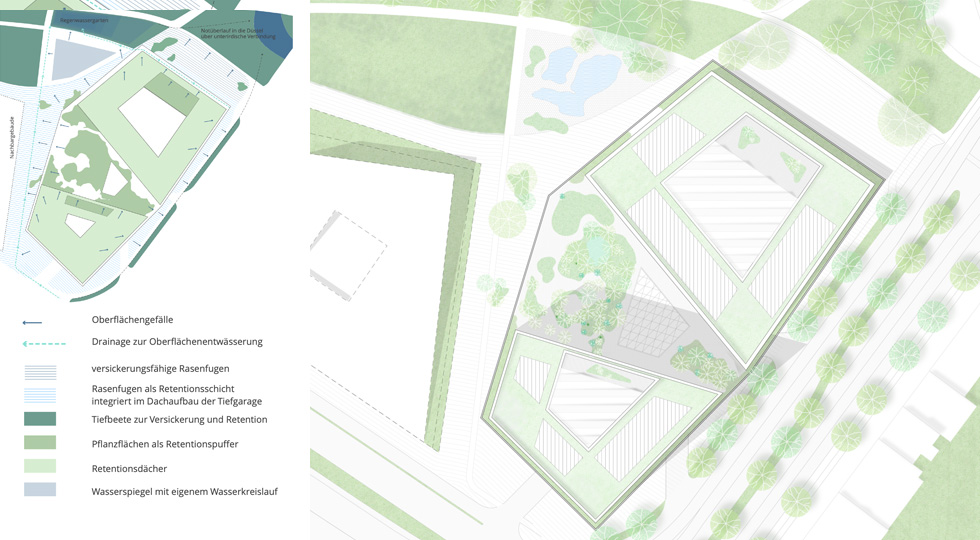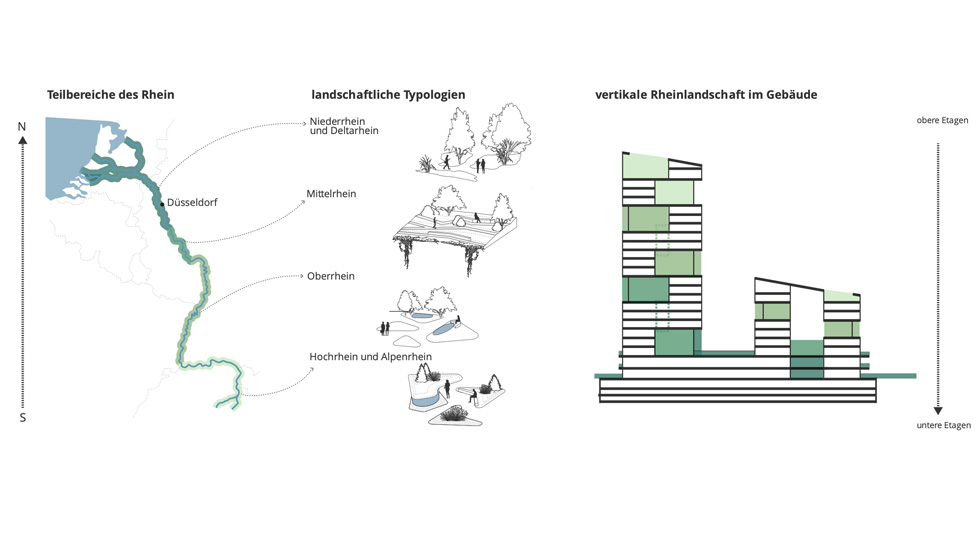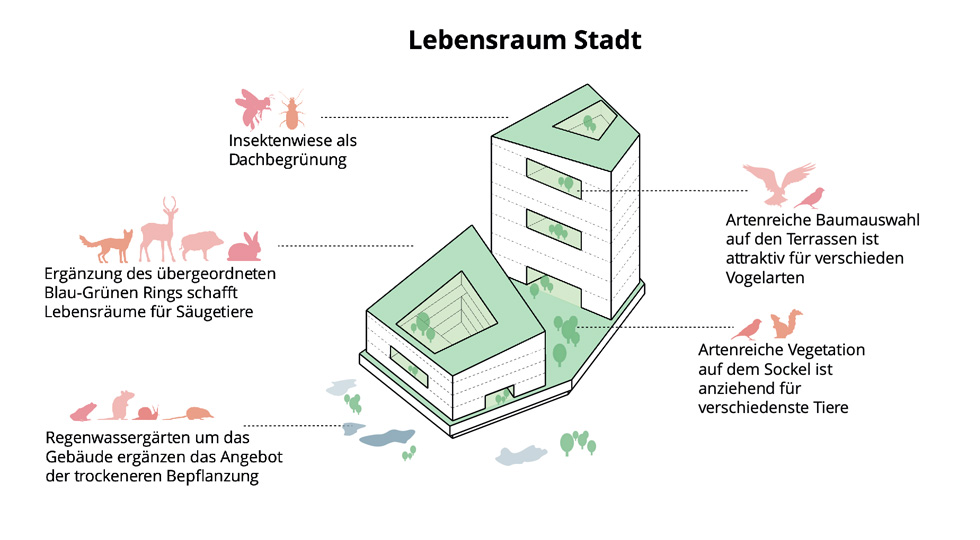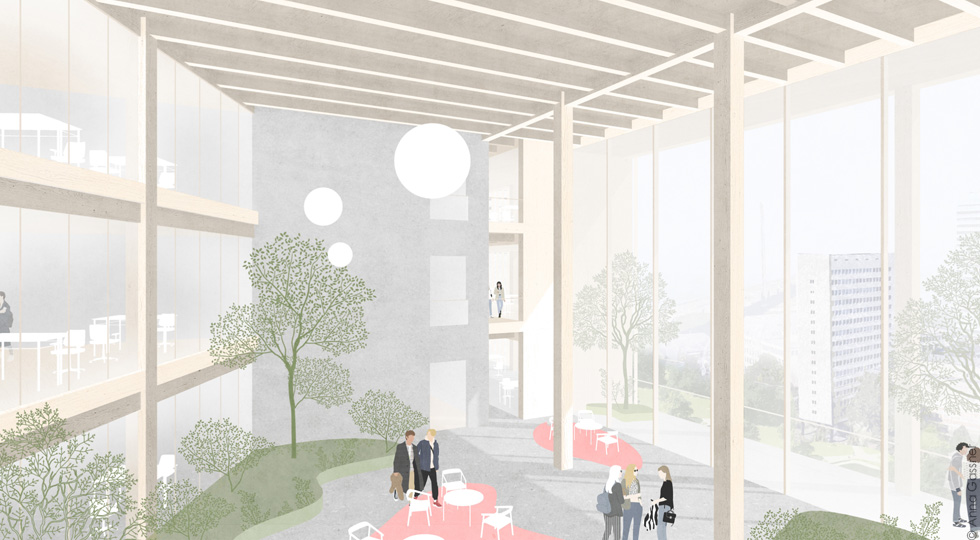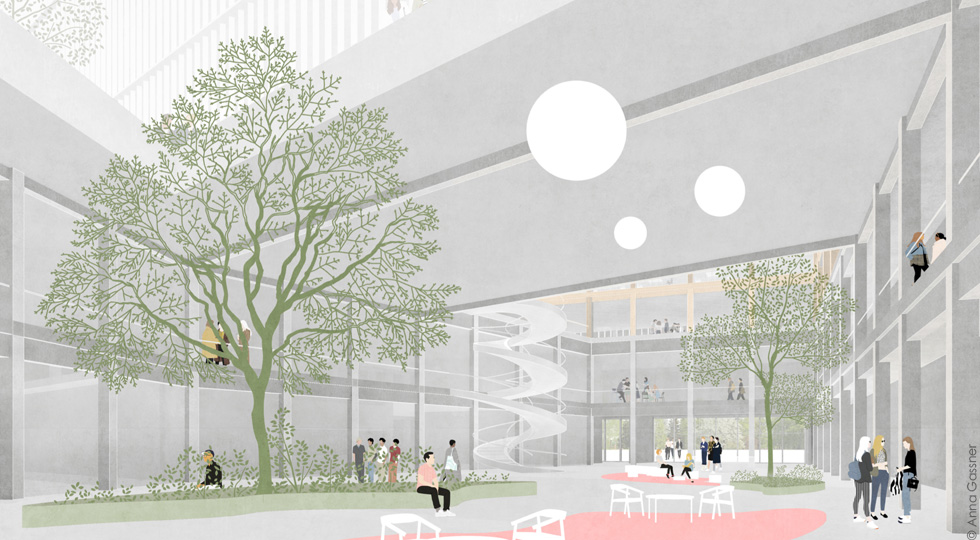Client: NRW Bank Düsseldorf
Design team: Lysann Schmidt (landscape architects) + Fabulism (landscape architects) + Paul Raphael Schägner (architect) + Winking – Froh Architekten (architects)
Location: Düsseldorf, Germany
Result: Competition 1st prize
Date: 2021
surface: 3.500 m2
After winning the competition for the urban design at Harold Bay, we now had the chance to work on a design for the NRW Bank property in this area. Through confining the green Harold bay from the south, the new NRW.BANK building creates a protected public space for pedestrians and cyclists, which can use these rich in species green areas, rainwater gardens and squares with water surfaces for various activities.
For the competition design, the historically significant Rhein was our source of inspiration, not only for the exterior square design, but also for the landscapes inside the building. The Rhein is not only one of the busiest waterways in the world, but is also the starting point of the history of the formation of the city Düsseldorf. People have settled here at the mouth of the Düssel in the Rhein since the old stone age. Through the river Rhein, Düsseldorf has always been connected to other European cities and the whole world. The Rhein runs through several different landscapes from its source to its estuary: Alpenrhein, Hochrhein, Oberrhein, Mittelrhein, Niederrhein, all eventually flow into the Rhein delta. Each of these segments is associated with its specific landscape characteristics, which are made experienceable in the park in and around the NRW.BANK building. For an example, the atriums of the building’s upper floors are shaped mainly with low plants and pebble surfaces, small hills with rocks and rushing water cascades, which represent the Alpenrhein. On the other hand, on the ground floor the design leans on the shape of the river’s delta. This delta landscape is the inspiration for the structure of the surfaces and the island-like vegetation in the base of the building, as well as in the adjacent open spaces. The green islands, depending on use requirements and needed infrastructure, can be customized towards the requirements of the residents. The fortified surfaces in the building have island-like inlays, so that the delta in the floor surface is visible. Very tall, indoor-friendly, deciduous trees direct the visitor’s glance from the entrance to the upper floors.
